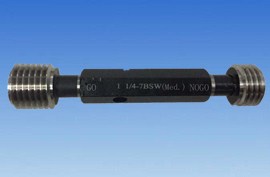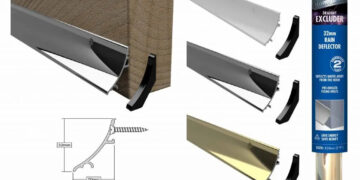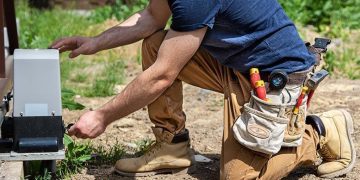Whitworth thread gauges are essential tools in the world of engineering and manufacturing. These precision instruments help ensure that threaded components meet stringent dimensional and functional standards. However, like any tool, they require proper care and maintenance to maintain their accuracy and prolong their lifespan. This guide explores the best practices for maintaining your Whitworth thread gauge, ensuring long-term precision and reliability.
Understanding Whitworth Thread Gauges
Before diving into maintenance tips, it’s crucial to understand what a Whitworth thread gauge is and why it’s vital. Named after Sir Joseph Whitworth, this gauge measures threads with a 55-degree angle, a design standard that has been in use since the mid-19th century. It’s commonly used in various industries, including automotive, aerospace, and machinery manufacturing.
Given their precision, even minor wear or contamination can lead to inaccuracies, potentially affecting the quality of the products being measured. Hence, regular maintenance is non-negotiable.
Essential Maintenance Practices
1. Cleanliness is Key
The most basic yet crucial aspect of maintaining a Whitworth thread gauge is cleanliness. Contaminants like dirt, oil, and metal shavings can accumulate on the gauge, leading to inaccurate measurements and accelerated wear. Here’s how to ensure cleanliness:
- Regular Cleaning: After each use, clean the gauge with a soft, lint-free cloth. For stubborn debris, use a mild solvent or a specialized cleaning agent designed for precision instruments.
- Compressed Air: Use compressed air to remove debris from hard-to-reach areas. Ensure the air is dry to avoid introducing moisture that can cause rust.
2. Proper Storage
Improper storage is a common cause of damage to thread gauges. To prevent this:
- Store gauges in a dedicated case or drawer lined with a soft, protective material.
- Avoid placing them in humid or damp environments, as this can lead to rust and corrosion.
- Use silica gel packets or dehumidifiers in storage areas to control moisture levels.
3. Regular Inspection
Routine inspections can help identify wear or damage early, allowing for timely intervention. During inspections:
- Check for visible signs of wear, such as rounding of edges or nicks.
- Use a certified master gauge to verify the accuracy of your Whitworth thread gauge.
- Record measurements and any deviations in a logbook to track wear over time.
4. Lubrication
While lubrication is more commonly associated with moving parts, a light coating of oil can protect the surface of your thread gauge from rust. Use a high-quality, non-corrosive oil and apply it sparingly with a soft cloth.
5. Avoid Overuse and Misuse
Thread gauges are precision tools and should be treated as such. Avoid using them as substitutes for other tools or applying excessive force, which can lead to deformation or damage.
6. Calibrate Periodically
Calibration ensures that your thread gauge maintains its precision over time. While the frequency of calibration depends on usage, a general rule of thumb is:
- Calibrate at least once a year for moderate use.
- For high-use gauges, calibrate more frequently, such as every six months.
Calibration should be performed by a certified laboratory using traceable standards to ensure accuracy.
Troubleshooting Common Issues
Even with proper maintenance, thread gauges can develop issues over time. Here are some common problems and their solutions:
- Rust and Corrosion: If rust is detected, clean the affected area with a rust remover and apply a protective oil coating. Prevent future occurrences by improving storage conditions.
- Wear and Deformation: If the gauge shows signs of wear or deformation, it may need to be replaced. Continuing to use a worn gauge can lead to inaccurate measurements and compromised quality.
- Contamination: Persistent contamination may require ultrasonic cleaning, a process that removes debris without damaging the gauge.
Advanced Care Tips
1. Use Protective Covers
When not in use, cover your thread gauge with a protective cap or sleeve to shield it from dust and accidental damage.
2. Minimize Temperature Fluctuations
Extreme temperature changes can affect the material properties of your gauge, leading to inaccuracies. Store and use the gauge in a controlled environment to minimize these effects.
3. Train Your Team
Proper handling and maintenance require knowledge. Ensure that all team members who use the gauge are trained in its proper care and usage.
Benefits of Proper Maintenance
Investing time and effort into maintaining your Whitworth thread gauge pays off in numerous ways:
- Enhanced Accuracy: Regular maintenance ensures that your gauge provides precise measurements, critical for high-quality manufacturing.
- Extended Lifespan: Proper care prevents premature wear and damage, saving costs on replacements.
- Improved Productivity: A well-maintained gauge reduces downtime caused by calibration errors or equipment failure.
- Cost Savings: Avoiding inaccuracies reduces the likelihood of product defects, minimizing rework and waste.
Conclusion
Maintaining your Whitworth thread gauge is not just about preserving a tool; it’s about ensuring the integrity and quality of your work. By following the outlined practices—cleaning, proper storage, regular inspection, and calibration—you can extend the life of your gauge and maintain its precision. Remember, the key to long-term performance lies in consistent care and attention to detail. Treat your Whitworth thread gauge as the precision instrument it is, and it will serve you reliably for years to come.













































